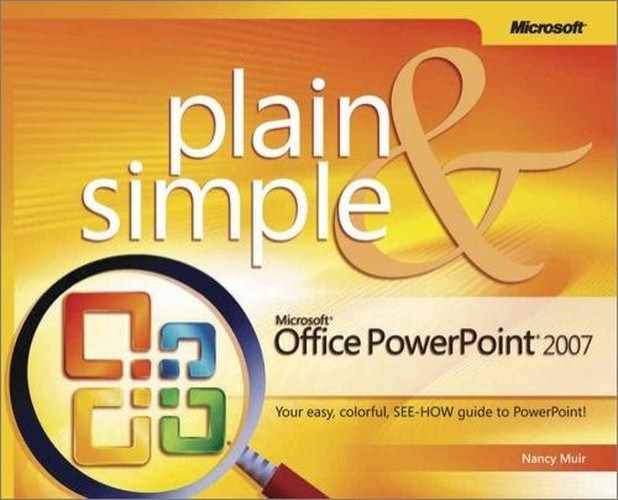There are several things you can do to help make your text more interesting or more easily readable, including resizing it, changing its color, or applying effects such as bold, italic, or underline. Design themes will apply preset font size and color, but when you want to fit more text on a page or emphasize some text, resizing is handy; and when you want to emphasize certain text, changing its color or making it bold, for example, can make it stand out.
 Move your mouse cursor over the colors in the palette to preview them in the selected text.
Move your mouse cursor over the colors in the palette to preview them in the selected text. Click the More Colors option to view additional color choices.
Click the More Colors option to view additional color choices. Click a color choice. Note that the Custom tab offers a Red/Green/Blue (RGB) color system that provides many more color choices and lets you make specific RGB settings.
Click a color choice. Note that the Custom tab offers a Red/Green/Blue (RGB) color system that provides many more color choices and lets you make specific RGB settings. Click OK to close the Color dialog box and apply the new color.
Click OK to close the Color dialog box and apply the new color.
Tip
Be careful about choosing lighter colors that are hard to read unless your slides have a dark background against which they can stand out. Likewise, don’t choose dark font colors against a dark background. Remember, the whole point of your presentation is to be readable by its viewers!
Tip
You can use the contextual toolbar that appears when you select text to change the font size and color or apply effects.
See Also
To change the background color of your slides so it works with your font color choices, see "Changing the Slide Background".
Try This!
Not every single font size is available on the font size list. Only very commonly used sizes are included. If you find you need a size somewhere in between the preset ones, you can also type a size, such as 100, 13, or 30, in the font size box to apply it.
Tip
Don’t make fonts so small they are difficult to read. Also note that as you add text to a placeholder, font sizes may shrink to fit all the text in. By keeping font sizes large enough to read and keeping your placeholder text to no more than six or so short bullet points, you ensure that your viewers can see your presentation’s contents clearly.
Try This!
To create custom character spacing, click the More Spacing option on the Character Spacing list. In the Font dialog box that appears, on the Character Spacing tab, choose expanded or condensed from the Spacing list, and then specify by how many points this effect should be applied. Click OK to save the new setting.






